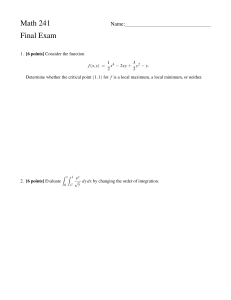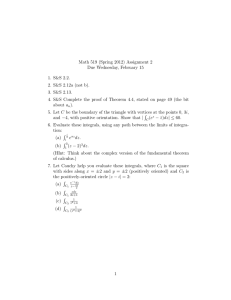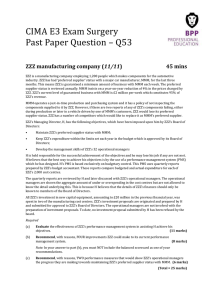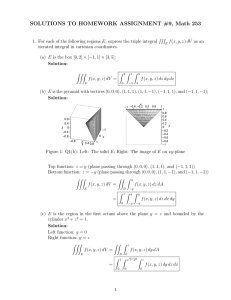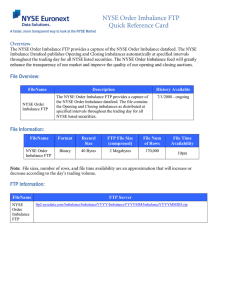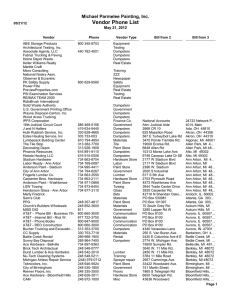Practice Problems: Final Exam
advertisement
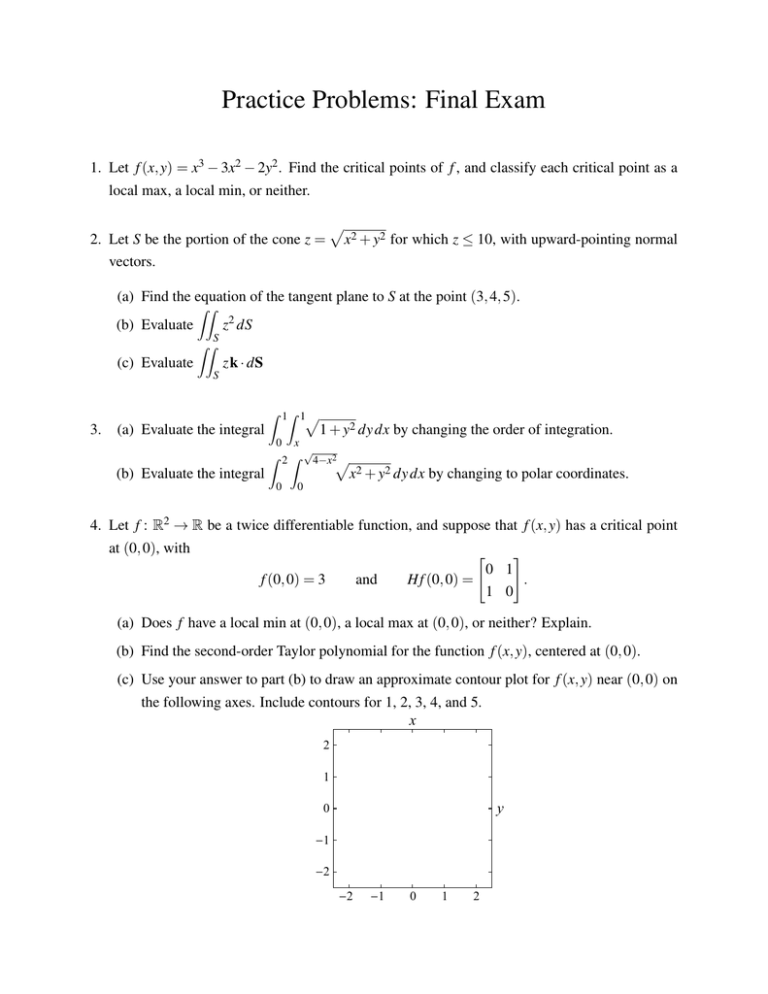
Practice Problems: Final Exam 1. Let f (x, y) = x3 − 3x2 − 2y2 . Find the critical points of f , and classify each critical point as a local max, a local min, or neither. 2. Let S be the portion of the cone z = p x2 + y2 for which z ≤ 10, with upward-pointing normal vectors. (a) Find the equation of the tangent plane to S at the point (3, 4, 5). ZZ (b) Evaluate z2 dS S ZZ (c) Evaluate zk · dS S 3. (a) Evaluate the integral (b) Evaluate the integral Z 1Z 1p 1 + y2 dy dx by changing the order of integration. 0 x 0 0 Z 2 Z √4−x2p x2 + y2 dy dx by changing to polar coordinates. 4. Let f : R2 → R be a twice differentiable function, and suppose that f (x, y) has a critical point at (0, 0), with f (0, 0) = 3 and H f (0, 0) = " # 0 1 1 0 . (a) Does f have a local min at (0, 0), a local max at (0, 0), or neither? Explain. (b) Find the second-order Taylor polynomial for the function f (x, y), centered at (0, 0). (c) Use your answer to part (b) to draw an approximate contour plot for f (x, y) near (0, 0) on the following axes. Include contours for 1, 2, 3, 4, and 5. x 2 1 y 0 -1 -2 -2 -1 0 1 2 ZZZ 5. Evaluate x dV , where P is the polyhedron shown in the figure below. P z H0,0,3L H0,2,3L H2,0,1L x H2,0,0L H0,2,0L y 6. Let C be the portion of the helix x(t) = (cos t, sin t, t) from the point (1, 0, 0) to the point (−1, 0, π). (a) Find parametric equations for the tangent line to C at the point (0, 1, π/2). Z (b) Evaluate xz ds. C Z (c) Evaluate xj · ds. (Hint: Use the identity cos 2θ = 2 cos2 θ − 1.) C 7. Let f (x, y) = 2x2 + 2xy + 2y2 − 18x − 24y. (a) Find the critical point of f . (b) Compute the Hessian of f at the critical point. (c) Is the Hessian positive definite, negative definite, or neither? Explain. (d) Is the critical point a local max, a local min, or neither? Explain. ZZ 8. Evaluate x2 + y2 2 dA, where R is the shaded region shown in the figure below. R r=1+Θ H-1 - Π, 0L y H1, 0L x ZZ 9. Evaluate x2 dA, where S is the square region with vertices (0, 2), (2, 0), (4, 2), and (2, 4). S 10. Use geometric reasoning to compute the following integrals: ZZZ dV , where R is the ball of radius 2 centered at the point (5, 3, 4). (a) R ZZ x dA, where T is the triangle with vertices (1, 0), (5, 0), and (3, 3). (b) T Z (c) (xz − 4) ds, where L is the line segment with endpoints (2, 3, 7) and (2, 8, 7). L ZZ 6 ds, where S is the portion of the unit sphere for which x ≥ 0. (d) S 11. Evaluate the following integrals. ZZZ p x2 +y2 +z2 dV , where R is the region defined by x2 +y2 +z2 ≤ 2 and z ≥ x2 + y2 . (a) R ZZ (b) √ z2 + 2 dS, where S is the surface z = 2 r for 0 ≤ r ≤ 1. S ZZ (c) S xj · dS, where S is the square with vertices (2, 1, 3), (3, 2, 4), (6, 4, 5), and (5, 3, 4), and upward-pointing normals.

